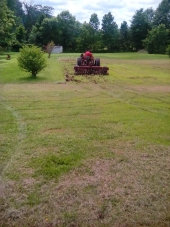
 4
4




No rain, no rainbow.
 3
3




 1
1




It's never too late to start! I retired to homestead on the slopes of Mauna Loa, an active volcano. I relate snippets of my endeavor on my blog : www.kaufarmer.blogspot.com
 2
2




Su Ba wrote:Funny story, Travis! Got a good chuckle out of that one.
I lived with snakes most my life. Never saw a problem with them. Had a rat snake living in the attic for years. Kept the place clear of mice and squirrels. Told the people that bought my house about the snake and they were delighted. They liked the idea of a safe biological mouse controller.
No rain, no rainbow.
 2
2




"Study books and observe nature; if they do not agree, throw away the books." ~ William A. Albrecht
 1
1




James Freyr wrote:Ryan this sounds great! I do hope you take pictures as you go and share them with us. If I can offer a suggestion without knowing if it's something you've already considered, place a few rocks in the water that are gently sloped, and leave a sorta flatish part above the water surface, and predatory insects such as the mosquito eating dragonflies will appreciate it and land and drink from these.
No rain, no rainbow.
 3
3




Ryan Hobbs wrote:
I didn't know that! I will do so. I imagine the frogs would also use them as ramps to get out if the water was low.
"Study books and observe nature; if they do not agree, throw away the books." ~ William A. Albrecht
 1
1




James Freyr wrote:
Ryan Hobbs wrote:
I didn't know that! I will do so. I imagine the frogs would also use them as ramps to get out if the water was low.
Yup the toadies will enjoy them too. Bees and all kinds of other pollinators and insects will also use them to get a drink. Similar flat stones can be placed around the bank in spots, and they will warm in the sun and lizards that have made a home by your pond will enjoy them, especially in the spring when they're waking up from winter sleep while temps are cool but the sun is shining.
No rain, no rainbow.
 1
1





|
I'd appreciate it if you pronounced my name correctly. Pinhead, with a silent "H". Petite ad:
Freaky Cheap Heat - 2 hour movie - HD streaming
https://permies.com/wiki/238453/Freaky-Cheap-Heat-hour-movie
|



